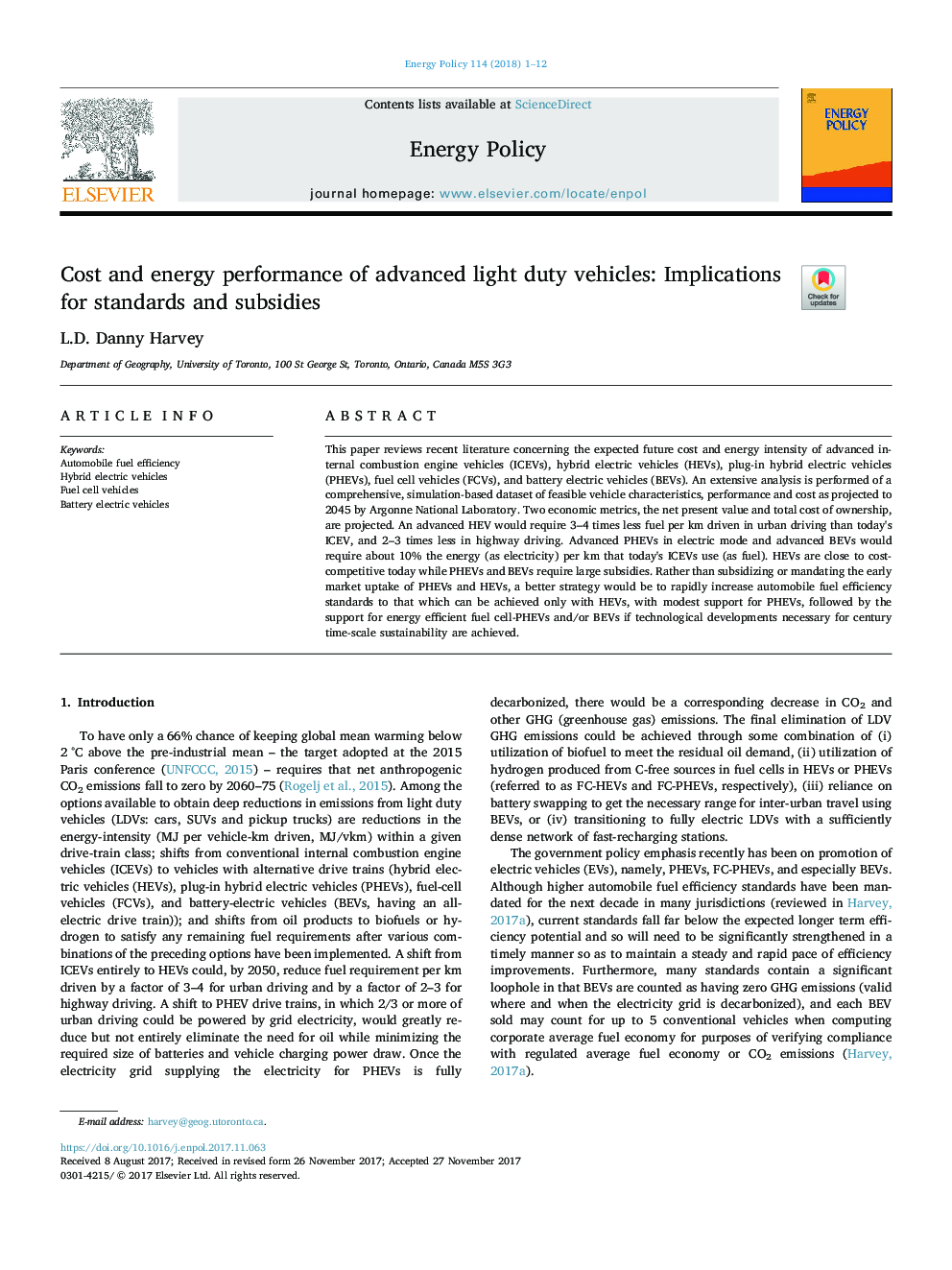| Article ID | Journal | Published Year | Pages | File Type |
|---|---|---|---|---|
| 7397512 | Energy Policy | 2018 | 12 Pages |
Abstract
This paper reviews recent literature concerning the expected future cost and energy intensity of advanced internal combustion engine vehicles (ICEVs), hybrid electric vehicles (HEVs), plug-in hybrid electric vehicles (PHEVs), fuel cell vehicles (FCVs), and battery electric vehicles (BEVs). An extensive analysis is performed of a comprehensive, simulation-based dataset of feasible vehicle characteristics, performance and cost as projected to 2045 by Argonne National Laboratory. Two economic metrics, the net present value and total cost of ownership, are projected. An advanced HEV would require 3-4 times less fuel per km driven in urban driving than today's ICEV, and 2-3 times less in highway driving. Advanced PHEVs in electric mode and advanced BEVs would require about 10% the energy (as electricity) per km that today's ICEVs use (as fuel). HEVs are close to cost-competitive today while PHEVs and BEVs require large subsidies. Rather than subsidizing or mandating the early market uptake of PHEVs and HEVs, a better strategy would be to rapidly increase automobile fuel efficiency standards to that which can be achieved only with HEVs, with modest support for PHEVs, followed by the support for energy efficient fuel cell-PHEVs and/or BEVs if technological developments necessary for century time-scale sustainability are achieved.
Related Topics
Physical Sciences and Engineering
Energy
Energy Engineering and Power Technology
Authors
L.D. Danny Harvey,
